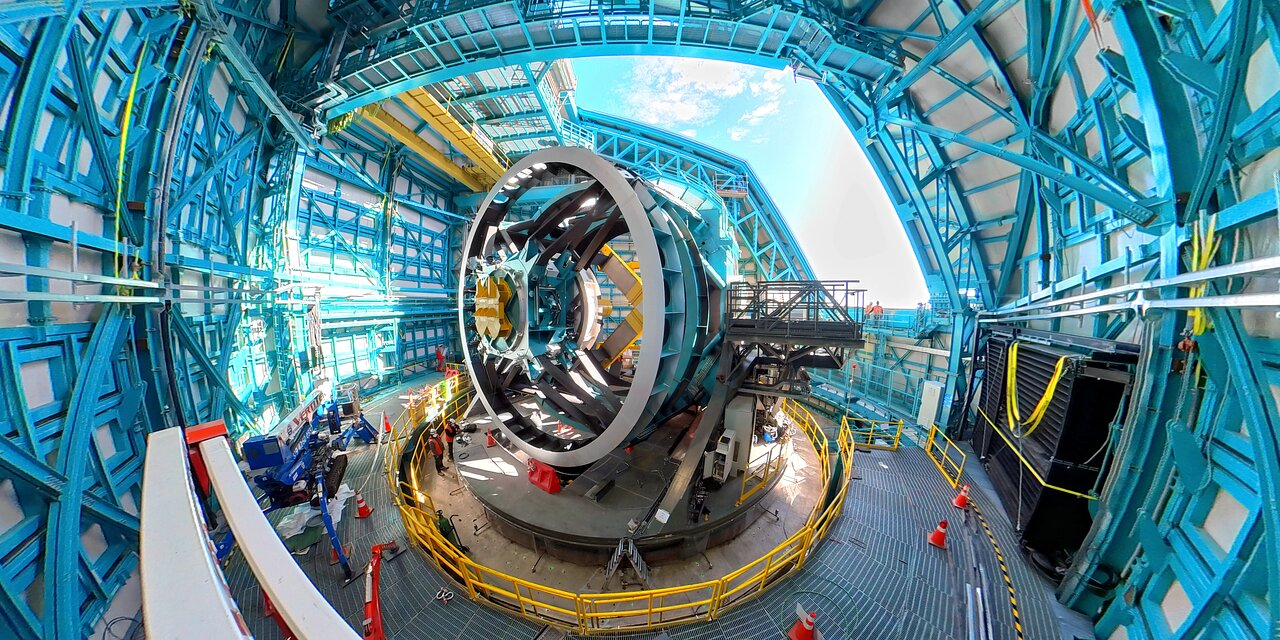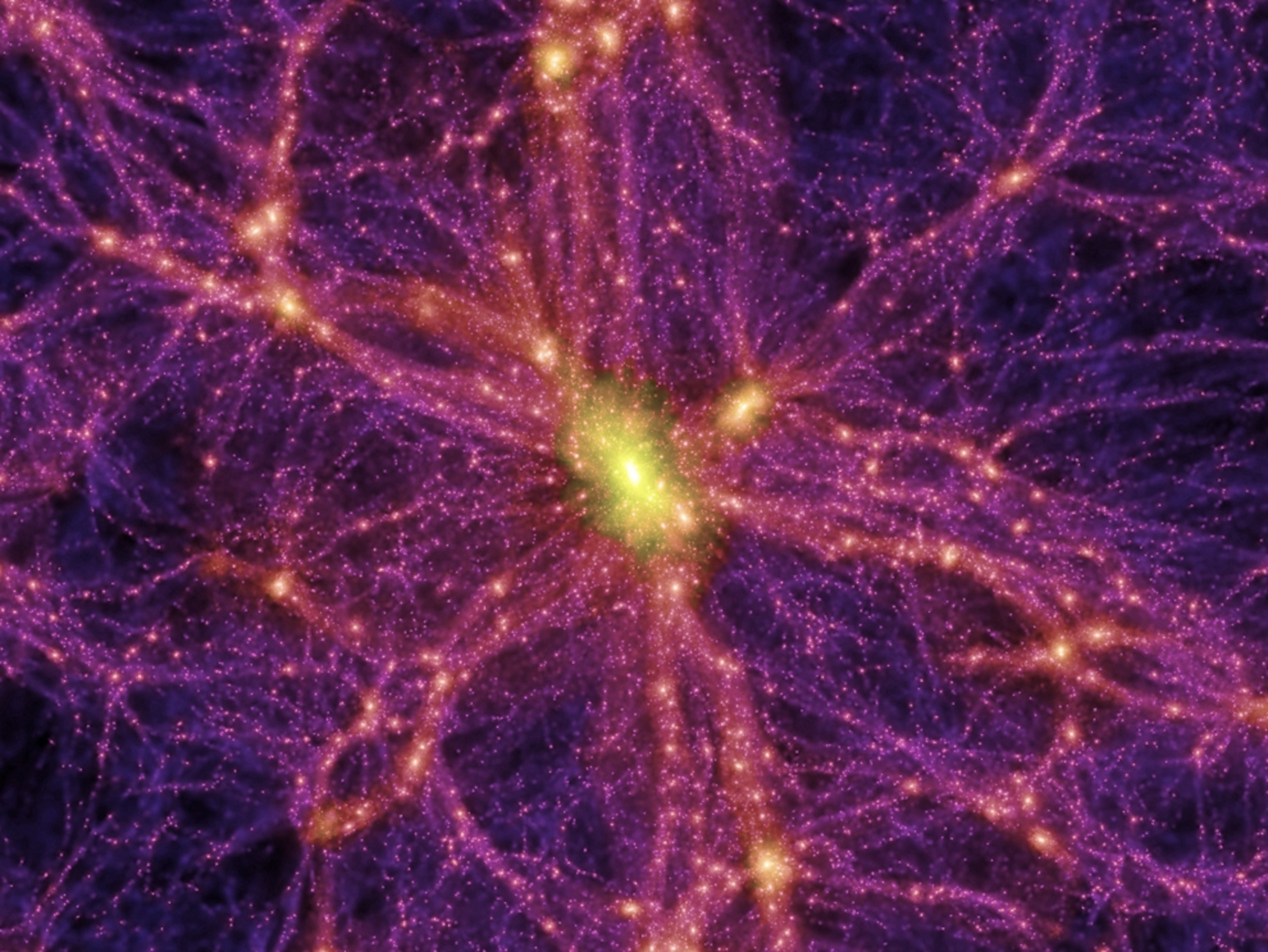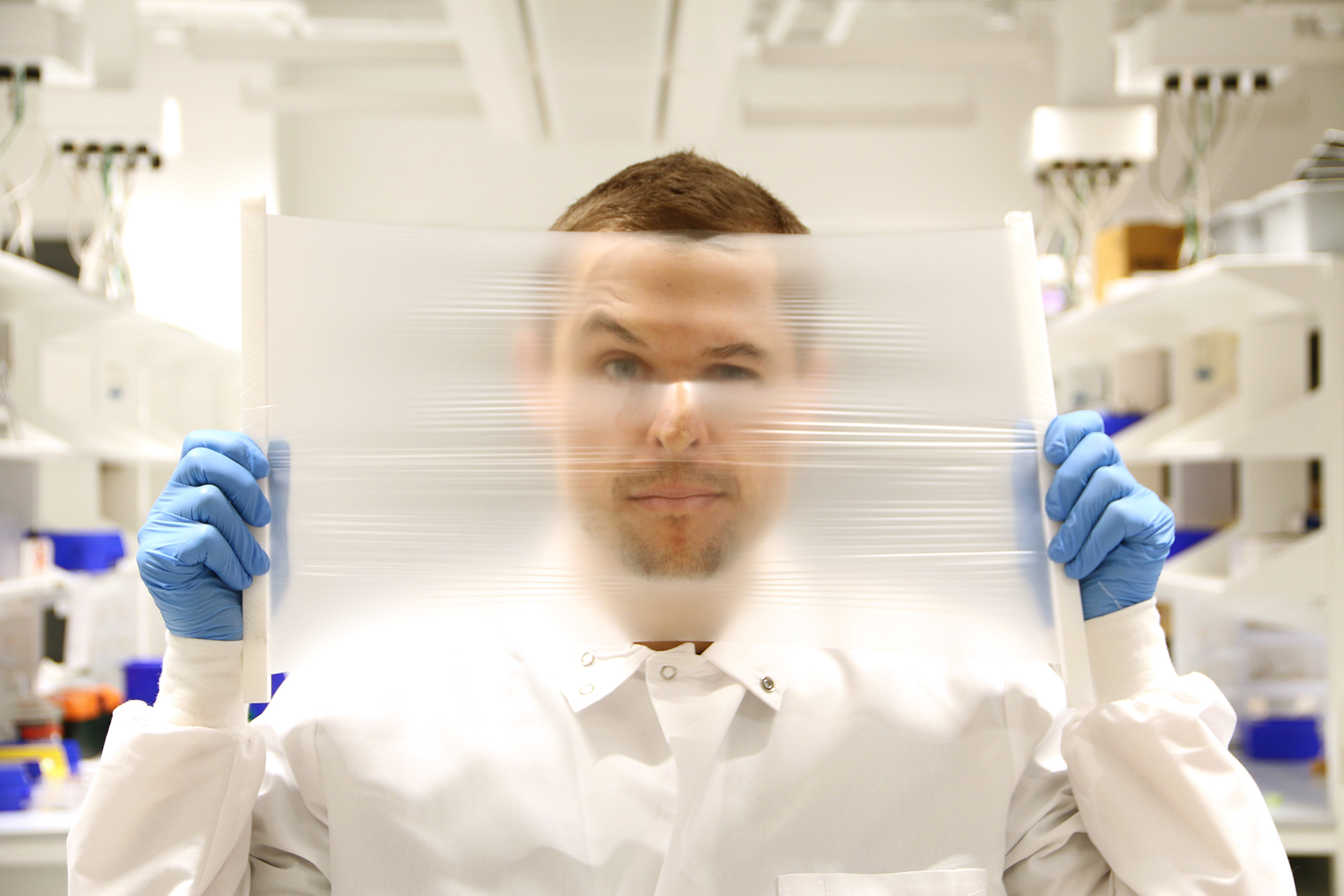Rubin Observatory is set to revolutionize our understanding of the cosmos with its groundbreaking Legacy Survey of Space and Time (LSST) project. With the installation of the powerful LSST camera, which boasts a staggering 144-megapixel resolution, the observatory aims to illuminate the mysteries of dark matter and provide detailed mappings of the Milky Way. Unlike traditional astronomical imaging, Rubin’s innovative cosmic cinematography will capture sweeping views of the night sky over a decade, revealing dynamic celestial phenomenon. This ambitious initiative promises to make vast amounts of data accessible for scientific research, enhancing our knowledge of the universe and its workings. As the observatory prepares for its extensive sky surveys, the potential for discoveries in astronomy has never been greater.
The Vera C. Rubin Observatory is on the brink of an astronomical breakthrough that will redefine how scientists perceive the universe. With a focus on comprehensive cosmic mapping and uncovering the secrets of dark matter, this cutting-edge facility incorporates advanced imaging technology to capture dynamic celestial events. Known for its exceptional capability in wide-field observations, the observatory’s LSST initiative will allow researchers to engage in a new form of cosmic storytelling—an approach often referred to as cosmic cinematography. As it embarks on a decade-long mission, the observatory aims not only to chart the Milky Way but also to develop methodologies for open-access data that fosters collaboration among global scientific communities. The results gleaned from this extensive project could hold the key to answering some of the most profound questions in astrophysics.
Exploring the Revolutionary LSST Camera at Rubin Observatory
The LSST camera, a groundbreaking advancement in astronomical imaging technology, signifies a pivotal moment in our understanding of the universe. With its astounding 3.2-gigapixel resolution, the LSST camera will be the heart of the Legacy Survey of Space and Time project at the Vera C. Rubin Observatory. This camera is not just big in size but also in ambition, as it aims to capture the vastness of the night sky with unparalleled detail. By combining the capabilities of a wide-field and large-aperture telescope, the LSST camera promises to unveil phenomena that have long eluded astronomers, thereby enhancing our ability to investigate cosmic mysteries such as dark matter and dark energy.
Through its revolutionary technology, the LSST camera will enable high-resolution cosmic cinematography, allowing scientists to capture time-lapse images of celestial events occurring across the universe. This innovation aims to map the Milky Way like never before, tracking dynamic changes in the night sky over a decade. The integration of sophisticated software frameworks at the Rubin Observatory will ensure that data collected is not only accessible but also comprehensible, facilitating significant breakthroughs in astrophysics and beyond.
The Rubin Observatory’s LSST camera marks a significant stride toward harnessing the full potential of astronomical imaging. With its ability to scan large portions of the sky multiple times throughout the year, scientists will be able to identify transient objects such as supernovae, asteroids, and other cosmic events that vary in brightness. This leads to a greater understanding of various cosmic phenomena, potentially reshaping our models of astrophysics. Furthermore, the camera’s expansive view will play a crucial role in analyzing dark matter by mapping its gravitational effects across the Milky Way and other galaxies, enhancing our comprehension of its elusive nature.
Mapping the Milky Way: Unveiling Cosmic Secrets
The Legacy Survey of Space and Time project is set to revolutionize our understanding of the Milky Way through comprehensive mapping. By utilizing the LSST camera, astronomers will capture multi-dimensional data that showcases the structure of our galaxy with unprecedented clarity. This mapping effort is not simply about identifying stars, but also understanding the distribution of dark matter throughout the galaxy. By delineating the gravitational pulls affecting stars and other celestial bodies, the project could illuminate the mysteries surrounding dark matter’s influence on galaxy formation and evolution.
Additionally, the Rubin Observatory will contribute to unraveling the complex relationship between dark matter and dark energy. As the LSST camera meticulously captures cosmic images over a decade, it will enable astronomers to monitor shifts and movements within the galaxy, providing crucial insights into how these unseen forces shape our universe. The ability to analyze this large dataset will fundamentally change our understanding of cosmic interactions, leading to potential breakthroughs in fundamental physics.
With a focus on mapping the Milky Way, this ambitious 10-year project at the Rubin Observatory will enhance our celestial cartography significantly. The data generated from the LSST camera’s observations will serve a diverse scientific community, allowing for inquiries into various astrophysical questions. Researchers will not only be able to locate known celestial bodies but also discover new phenomena—possibly even new classes of objects or previously hidden structures in the Milky Way. This depth of exploration will not only sharpen our view of the galaxy but also paint a broader picture of the cosmos at large, contributing to our search for answers about dark matter and energies that pervade the universe.
Understanding Dark Matter Through Advanced Astronomical Imaging
Dark matter remains one of the most enigmatic components of the universe, composing approximately 90% of the Milky Way’s mass yet eluding direct observation. The advances brought forth by the LSST camera at the Rubin Observatory aim to change that narrative. By acquiring high-resolution images and data across a vast temporal range, researchers hope to infer the location and distribution of dark matter by observing its gravitational impact on visible matter. This unprecedented level of detail could help unlock the secrets of how dark matter interacts with ordinary matter within galaxies.
In synergy with advanced algorithms and computational techniques, the LSST camera will allow scientists to analyze extensive data sets that reveal subtle gravitational effects. The focus will not just be on identifying where dark matter is but also on understanding its role in cosmic evolution. The Rubin Observatory’s commitment to data accessibility will ensure that this information is shared broadly, empowering the scientific community and potentially leading to groundbreaking revelations about dark matter and its fundamental properties.
Moreover, the integrative approach of the LSST camera in the study of dark matter will provide insights that connect with theoretical physics on an unprecedented scale. As we strive to segment data concerning gravitational effects across vast astronomical surveys, this leads to a better modeling of dark matter’s distribution across the Milky Way. Through the integration of this imaging technology, we could witness fundamental progress in our understanding of the universe and its composition, opening pathways toward addressing long-standing questions about dark energy as well.
Cosmic Cinematography: A New Era of Astronomical Observation
The term ‘cosmic cinematography’ aptly describes the innovative approach being taken by the Rubin Observatory in observing celestial events. This method transcends traditional astronomical techniques by focusing on the dynamic changes in the night sky, enabling researchers to capture and analyze time-sensitive phenomena. The LSST camera will facilitate this by providing high-resolution imagery that covers large areas of the sky quickly and efficiently, which is essential for identifying transient phenomena such as supernovae and moving asteroids that may have a profound impact on our understanding of the solar system and beyond.
By integrating advanced imaging techniques into their observation protocols, astronomers can create a comprehensive cinematic record of the cosmos. The data collected will serve multiple scientific domains: it will help predict potentially hazardous objects in our vicinity, document the lifecycle of stars, and reveal intricate details about the Milky Way’s structure and its interactions with dark matter. As a result, cosmic cinematography stands as a cornerstone of modern astronomical investigation, fostering deeper insights into the workings of our universe.
This new era also emphasizes a collaborative scientific approach, as the data produced is set to be shared openly with the global research community. Through public engagement and educational outreach, the Rubin Observatory aims not just to advance astrophysics but to inspire the next generation of scientists and astronomers. By making the findings from the LSST camera accessible, we democratize science and broaden the scope of inquiry beyond traditional research institutions, allowing for public participation in remarkable discoveries and debates about cosmic phenomena.
Promoting Educational Outreach and Data Accessibility
One of the game-changing aspects of the Legacy Survey of Space and Time project at the Rubin Observatory is its commitment to educational outreach. By ensuring immediate availability of all collected data, the project invites a broader community of scientists, educators, and students to engage with the universe’s mysteries. This initiative will provide invaluable resources for K-12 outreach programs, fostering a STEM-oriented mindset among young learners and offering them a firsthand look at groundbreaking astronomical research. Such exposure is pivotal in inspiring future generations to partake in the fields of science and technology, tackling questions related to dark matter, cosmic imaging, and the larger structure of our universe.
The educational framework accompanying the LSST will serve to bridge scientific research and public curiosity, presenting complex astronomical concepts in an accessible manner. Through workshops, webinars, and interactive educational materials, students and the local community will gain insight into the significance of the Rubin Observatory’s discoveries. In essence, the project’s open data philosophy not only empowers the scientific community but also nurtures public engagement in a democratic manner, promoting a culture of inquiry and appreciation for the universe.
Moreover, the Rubin Observatory is set to share insights and findings from its cosmic journey with educational institutions globally, creating a collaborative environment for research and learning. As students and educators work with real-world data from the LSST camera, they become active participants in the scientific process, analyzing celestial data and potentially contributing to groundbreaking discoveries. This opportunity directly counters the traditional model of research being confined to elite institutions, extending the reach of advanced scientific inquiry across diverse societal demographics. Ultimately, the educational outreach program aims to cultivate a holistic understanding of how astronomical imaging, mapping of the Milky Way, and the study of dark matter interconnect, highlighting the profound complexities of our universe.
The Potential of Open Data in Astronomy
Open data initiatives, like that planned for the Rubin Observatory’s LSST project, represent a seismic shift in how scientific research is conducted and shared. Providing immediate access to vast amounts of astronomical data encourages collaborative efforts among researchers across the globe. This open-access paradigm allows for diverse interpretations and analyses of the same data, enhancing scientific discourse. With a commitment to transparency, the Rubin Observatory aims to set a new precedent in astronomy, where discoveries on dark matter, the dynamics of the Milky Way, and other cosmic phenomena can be explored by anyone with the interest and expertise.
The democratization of data is crucial for fostering a more inclusive scientific community. By inviting contributions from amateur astronomers, educators, and students, the project not only accelerates the pace of discovery but also empowers individuals who may have innovative approaches to analysis. This approach of shared ownership over data opens doors to fresh ideas and perspectives, fostering a culture where creativity and inquiry thrive, ultimately enhancing our understanding of the cosmos.
Moreover, the sharing of astronomical data can catalyze interdisciplinary collaboration, allowing astronomers to partner with computer scientists, data analysts, and even educators to develop new analytical tools and methods. These collaborations can lead to novel insights and applications that enhance our ability to interpret the intricacies of dark matter and cosmic events. By embracing an open-data ethos, the Rubin Observatory is poised to not only transform the landscape of astronomical research but also engage a public highly interested in the wonders of space, igniting passion and curiosity across fields.
Frequently Asked Questions
What is the purpose of the Rubin Observatory’s LSST camera?
The LSST camera at the Rubin Observatory is designed to create a detailed and comprehensive map of the universe. It combines large aperture capabilities with wide-field imaging, allowing astronomers to capture faint astronomical objects across a broad area of the night sky, thereby assisting in a multitude of scientific endeavors such as mapping the Milky Way and studying dark matter.
How does the Rubin Observatory contribute to Milky Way mapping?
The Rubin Observatory plays a crucial role in mapping the Milky Way by utilizing its LSST camera to frequently survey the night sky. This project enables scientists to observe changes and movements of celestial objects over a 10-year period, creating a dynamic time-lapse image that enhances our understanding of the structure and composition of our galaxy.
What advancements does the Rubin Observatory bring to astronomical imaging?
The Rubin Observatory brings significant advancements to astronomical imaging through its LSST camera, which boasts a resolution 21 times greater than earlier test cameras. This enhancement allows for ‘cosmic cinematography,’ enabling detailed observations of cosmic events such as supernova explosions and asteroids, as well as providing insights into dark matter and dark energy.
How will the LSST camera aid in understanding dark matter?
The LSST camera will aid in understanding dark matter by allowing researchers to capture high-resolution images that reveal the gravitational effects dark matter has on visible objects. By observing changes and movements in the night sky over the course of the Legacy Survey of Space and Time project, scientists hope to gather critical data that could help define the elusive properties of dark matter.
What is meant by ‘cosmic cinematography’ at the Rubin Observatory?
‘Cosmic cinematography’ refers to the capability of the Rubin Observatory to create continuous time-lapse imagery of the night sky. With its LSST camera, the observatory can capture images of celestial events and track changes over a 10-year span, facilitating a deeper investigation into transient astronomical phenomena and the underlying forces, including dark energy.
When will the first astronomical images from the Rubin Observatory be released?
The first public release of astronomical images from the Rubin Observatory is expected in mid-2025, following a commissioning period of approximately six months after the installation of the LSST camera.
How will data from the Rubin Observatory be shared with the community?
Data collected by the Rubin Observatory will be made immediately available to the global scientific community and other interested organizations. This open-access approach aims to empower scientists and educators alike, facilitating widespread use of the data for research and educational purposes.
What impact does the Rubin Observatory aim to have on dark energy research?
The Rubin Observatory aims to impact dark energy research significantly by providing precise and comprehensive data over its 10-year survey period. The LSST camera’s capabilities will enable detailed observations that could enhance our understanding of dark energy’s role in the accelerated expansion of the universe.
| Key Points | Details | |
|---|---|---|
| Project Overview | The Rubin Observatory’s Legacy Survey of Space and Time aims to create a comprehensive map of the universe. | |
| Milestone Achieved | The test camera at the Rubin Observatory captured its first images of the night sky in October 2024. | |
| Camera Specifications | The LSST Camera is the largest astronomical camera, set to capture images 21 times larger than the test camera. | |
| Data Accessibility | All collected data will be made immediately available to global scientists and educational institutions. | |
| Research Focus | The observatory will search for transient celestial phenomena, including asteroids, supernovae, and dark matter. | |
| Project Duration | The project will span ten years, providing ongoing time-lapse images of the sky. | |
| Potential Discoveries | Research may lead to insights into dark matter and dark energy. | |
Summary
The Rubin Observatory is at the forefront of astronomical research with its groundbreaking Legacy Survey of Space and Time project. By utilizing advanced technology, the observatory will not only create a detailed map of the universe but also provide unprecedented access to valuable data for scientists worldwide. With its ability to capture dynamic cosmic phenomena over a decade, the Rubin Observatory stands to significantly enhance our understanding of fundamental astrophysical concepts, including the elusive nature of dark matter and dark energy.



